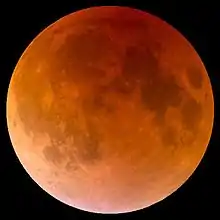May 1938 lunar eclipse
A total lunar eclipse took place on May 14, 1938. This was the last total lunar eclipse of Saros cycle 120. It was visible from Oceania, the Pacific Ocean, North America, South America and Antarctica.
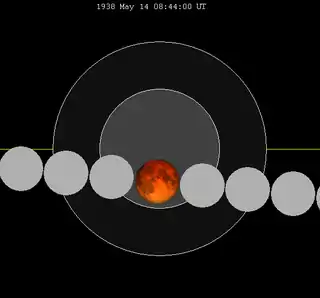
Visibility
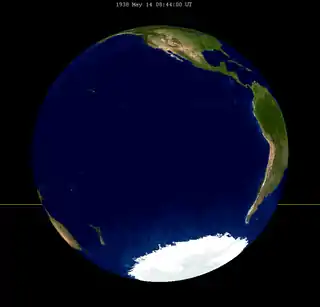
Related lunar eclipses
| Ascending node | Descending node | |||||
|---|---|---|---|---|---|---|
| Saros | Date Viewing |
Type Chart |
Saros | Date Viewing |
Type Chart | |
| 110 | 1937 May 25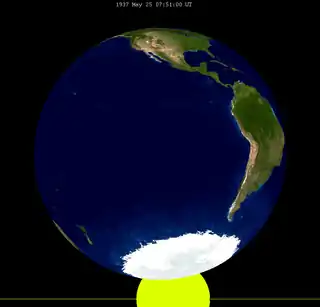 |
Penumbral |
115 | 1937 Nov 18 |
Partial | |
| 120 | 1938 May 14 |
Total |
125 | 1938 Nov 07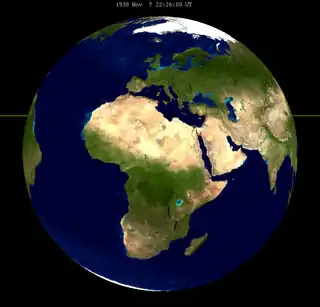 |
Total | |
| 130 | 1939 May 03 |
Total |
135 | 1939 Oct 28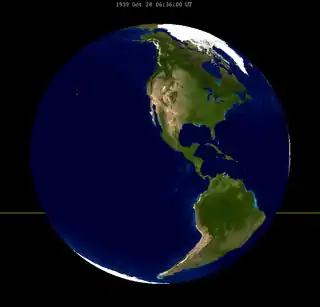 |
Partial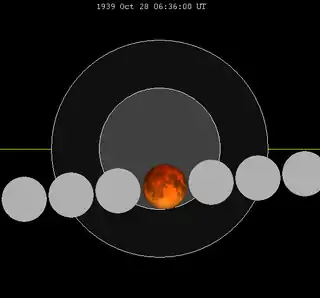 | |
| 140 | 1940 Apr 22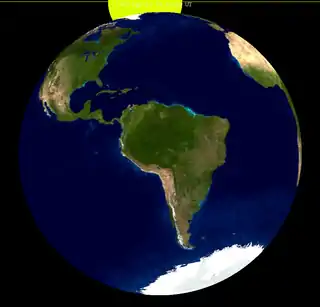 |
Penumbral |
145 | 1940 Oct 16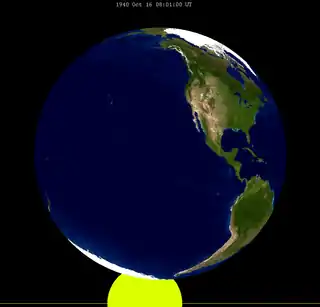 |
Penumbral | |
Half-Saros cycle
A lunar eclipse will be preceded and followed by solar eclipses by 9 years and 5.5 days (a half saros).[1] This lunar eclipse is related to two total solar eclipses of Solar Saros 127.
| May 9, 1929 | May 20, 1947 |
|---|---|
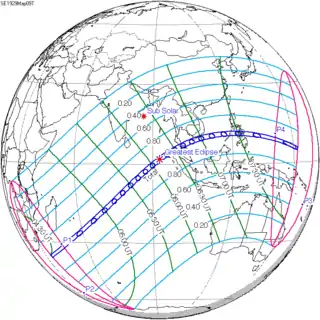 |
 |
See also
- List of lunar eclipses
- List of 20th-century lunar eclipses
Notes
- Mathematical Astronomy Morsels, Jean Meeus, p.110, Chapter 18, The half-saros
References
- 1938 May 14 chart Eclipse Predictions by Fred Espenak, NASA/GSFC
- Total Eclipse of the Moon: 1938 May 14 HM Nautical Almanac Office
- The Lunar Eclipse of 1938 may 14 and its Saros Series, with Plate VI Pogo, Alexander, Popular Astronomy, Vol. 46, p.385
External links
- May 13/14, 1938 — Total Lunar Eclipse www.timeanddate.com
This article is issued from Wikipedia. The text is licensed under Creative Commons - Attribution - Sharealike. Additional terms may apply for the media files.

